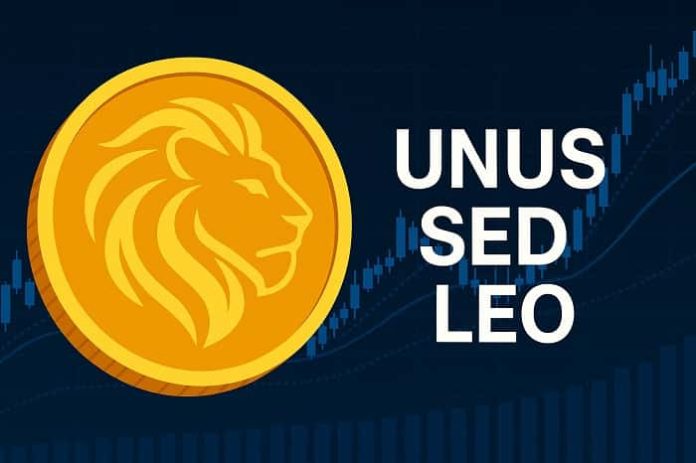
Introduction
UNUS SED LEO is the native token of the iFinex ecosystem, known primarily for its integration with the Bitfinex exchange. Since launching in 2019, the token has become a key component in the category of centralized exchange (CEX) utility tokens—assets whose value is derived from platform economics, user incentives, and systematic burn mechanisms.
As centralized exchanges evolve into broader Web3 hubs, tokens like UNUS SED LEO function as glue between user engagement, revenue capture, and ecosystem incentives. The significance of LEO lies in its predictable burn schedule, direct linkage to platform revenue, and structured utility for heavy traders.
Technology Overview
UNUS SED LEO operates as an ERC-20 token on Ethereum, with a smaller portion issued on EOS. Ethereum serves as the dominant chain for liquidity, tooling, and settlement. Because LEO is not its own blockchain, it inherits Ethereum’s security, consensus model, and network reliability.
The token’s smart contract is intentionally simple, avoiding complex logic in favor of transparent supply control and burn mechanics. The technology stack is designed around dependability and integration rather than cryptographic innovation.
Architecture & Mechanism
The architecture of UNUS SED LEO revolves around platform-linked utility and a deflationary burn engine powered by iFinex revenue.
Revenue-Burn Engine
iFinex commits a fixed portion of its revenues—publicly communicated as at least 27%—to buying back LEO tokens from the market and burning them. This makes the token deflationary and links scarcity directly to platform performance. Buybacks occur at market prices and continue until all tokens are theoretically burned.
Multi-Chain Design
LEO exists on both Ethereum and EOS, though the market has standardized around Ethereum for liquidity and integration. The dual-chain approach originally aimed to provide flexibility, redundancy, and interoperability.
Utility Integration With Bitfinex
UNUS SED LEO enables a series of benefits on Bitfinex, such as:
-
Reduced spot and derivatives trading fees
-
Benefits in lending and financing products
-
Access to select services, promotions, or features
These utilities reinforce the token’s role within the iFinex economy.
Security Considerations
Although contract risk is minimal due to simplicity, broader risks stem from centralization: platform dependency, regulatory exposure, and operational vulnerabilities at Bitfinex.
Tokenomics
Supply Structure
The token launched with just under 1 billion units, with a majority already circulating. There is no inflation; supply only decreases through burns.
Burn & Emission Framework
LEO’s tokenomic model replaces issuance with continuous burning. The speed of supply reduction is tied directly to Bitfinex’s revenue streams. Higher exchange volumes and new product lines increase burn velocity.
Utility Model
The token’s primary utilities include:
-
Trading fee discounts
-
Operational benefits across Bitfinex products
-
Enhanced platform rates or access to special features
LEO’s value is strongly connected to user activity inside the iFinex ecosystem.
Initial Distribution
LEO launched via a private sale that raised approximately $1 billion. No ongoing inflation exists, and burns consistently reduce supply.
Tokenomic Risks
-
Burn speed fluctuates with revenue
-
Utility concentrated within a single platform
-
Centralized decision-making regarding burns
-
Potential concentration among large holders
Use Cases
Trading Fee Reductions
LEO offers significant discounts across spot, derivatives,UNUS SED LEO and other fee categories, providing tangible benefits for professional traders.
Access to Ecosystem Features
Holders may gain access to premium services, enhanced lending rates, or participation in exclusive programs.
Exposure to Exchange Economics
Since LEO is tied to Bitfinex revenue, it offers a type of exposure to exchange performance distinct from protocol-based tokens.
Cross-Platform Integration
Some iFinex-related services incorporate LEO, expanding UNUS SED LEO utility slightly beyond core exchange functions.
Competitive Landscape
UNUS SED LEO competes with leading exchange tokens such as BNB, OKB, and HT.
Comparison With Key Competitors
BNB (Binance):
Large ecosystem, includes BNB Chain, broader DeFi and infrastructure utility, high adoption.
OKB (OKX):
Integrated across OKX trading and Web3 ecosystem, strong global presence.
HT (Huobi):
Historically strong but weakened due to exchange reputation challenges.
LEO’s Competitive Position
UNUS SED LEO Strengths include predictable supply reduction and strong integration within Bitfinex. Weaknesses lie in narrower utility and absence of a dedicated blockchain ecosystem.
Market Analysis & Narrative Fit
Market Behavior
LEO tends to display lower volatility due to its revenue-linked model. Volume cycles across the exchange industry affect its performance.
Narrative Alignment
UNUS SED LEO fits the following narratives:
-
CEX tokens
-
Deflationary token models
-
Utility-driven economics
It does not align strongly with high-growth narratives such as AI, L2 scaling, RWAs, or DePIN.
Catalysts
-
Higher Bitfinex revenue
-
Expansion of ecosystem products
-
Increased transparency in burn reports
-
New integrations or utility layers
Long-Term Positioning
Long-term success depends on Bitfinex’s ability to innovate, expand market share, and enhance token utility beyond fee reductions.
Risks & Limitations
-
Smart-contract vulnerabilities on Ethereum
-
Heavy dependency on Bitfinex performance
-
Regulatory pressure on centralized exchanges
-
Liquidity concentration risks
-
Limited adoption outside the iFinex environment
-
Burn mechanism slows during low volume periods
-
Competition from larger ecosystem tokens
-
Centralized governance structure
DYOR Checklist
-
Review Bitfinex/iFinex corporate structure
-
Read the LEO whitepaper
-
Verify burn frequency and transparency
-
Track Bitfinex trading volume trends
-
Examine regulatory status in key jurisdictions
-
Check token holder concentration on-chain
-
Review smart-contract audits
-
Monitor ecosystem integrations
-
Inspect treasury and revenue disclosures
-
Evaluate burn trajectory vs circulating supply
-
Monitor user activity growth on Bitfinex
Final Verdict
UNUS SED LEO is a structured, utility-driven CEX token built around a deflationary burn framework and tightly UNUS SED LEO integrated with the Bitfinex ecosystem. Its economic model is clear and operationally grounded, offering tangible benefits to active traders.
However, its future success relies heavily on Bitfinex’s performance, regulatory environment, and ability to expand its ecosystem. From a Web3 research perspective, LEO serves as a strong case study of centralized platform tokenomics and the mechanics of revenue-linked deflationary design.
This content is for educational purposes onlyUNUS SED LEO and does not constitute financial advice.
Cryptocurrencies involve significant risk. Always conduct your own research (DYOR).
